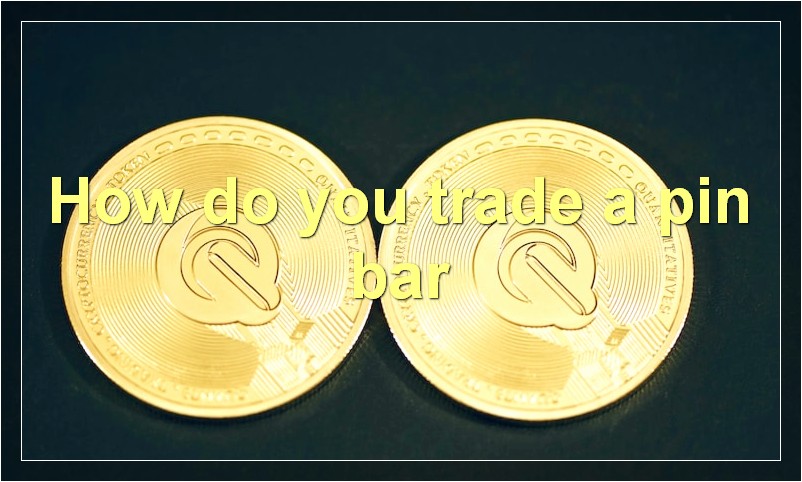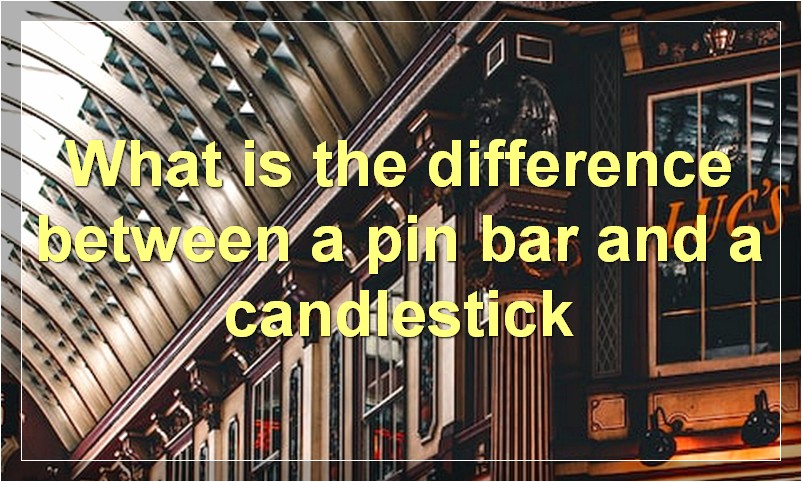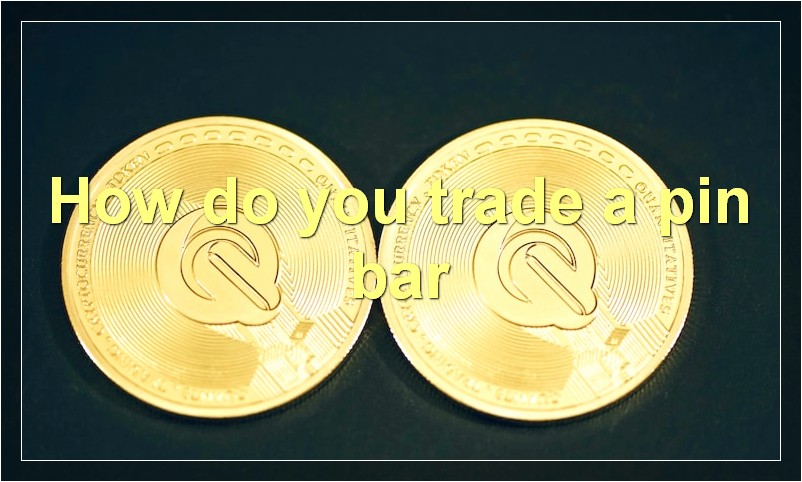If you’re looking to make some quick and easy profits, then trading pin bars is the way to go! Here’s a step-by-step guide on how to do it.
What is a pin bar
A pin bar is a popular technical analysis tool that displays the high and low price of a security for a specific period of time. Pin bars are used to identify potential reversals in the market and possible entry and exit points.
How do you trade a pin bar

A pin bar is a price action reversal pattern that indicates that a certain level or price point in the market has been rejected. The pin bar formation consists of a long tail and a short body, with the long tail indicating the rejection of the level.
In order to trade a pin bar, you need to first identify a potential level where price may reverse. This can be done by looking for areas of support and resistance, or by using technical indicators such as Fibonacci levels. Once you have identified a potential level, you need to wait for a pin bar formation to occur.
Once a pin bar has formed, you can enter a trade by placing a stop loss just below the low of the pin bar and a target price at a previous area of support or resistance.
What is the best pin bar strategy
There are many different pin bar strategies that traders can use, but some are more effective than others. One of the best pin bar strategies is to look for pin bars that form at key levels of support and resistance. These levels can be identified by using technical indicators such as Fibonacci retracements or moving averages.
Another good strategy is to look for pin bars that form after a period of consolidation. This indicates that the market is about to make a move in one direction or the other. Often, the direction of the move can be predicted by the direction of the breakout from the consolidation.
Finally, it is also a good idea to use multiple time frame analysis when looking for pin bars. This means looking at a chart with a longer time frame to identify the overall trend, and then using a shorter time frame to identify potential entry and exit points.
What are the benefits of trading pin bars
A pin bar is a candlestick pattern that can be found on any candlestick chart. It is made up of a long upper shadow, a short lower shadow, and a small body. The upper shadow indicates the high price for the period, while the lower shadow indicates the low price. The small body shows the open and close price, with the open being at the bottom and the close being at the top.
The benefits of trading pin bars are many. First, they are easy to spot on a chart. Second, they can be found on any timeframe, so you can trade them on your preferred timeframe. Third, they provide a clear-cut way to enter and exit a trade. And fourth, they offer an excellent risk-reward ratio.
How can you identify a pin bar
A pin bar is a type of candlestick pattern that indicates that a security’s price is likely to reverse direction. The pin bar formation consists of three candles:
The first candle is called the “hammer” candle. This candle has a small body and a long lower shadow. The long lower shadow indicates that the security’s price was pushed down significantly, but then rebounded and closed near its opening price.
The second candle is called the “engulfing” candle. This candle is bigger than the hammer candle and it completely engulfs thehammer candle’s body. This indicates that the bears were in control during the first part of the period, but the bulls took over by the end and pushed the price back up.
The third candle is the “confirmation” candle. This candle should be of the same color as the engulfing candle and it should close above the midpoint of the first candle’s body. This confirms that the reversal is likely to continue and that the bulls are in control.
What is the difference between a pin bar and a candlestick

When it comes to technical analysis, there are a few tools that traders use to help them make decisions. Two of the most popular tools are pin bars and candlesticks. So, what is the difference between a pin bar and a candlestick?
A pin bar is a single candlestick that has a long tail. The long tail indicates that there was significant selling pressure during the period. A candlestick is simply a representation of price action during a given period of time.
A pin bar is often seen as a reversal signal, as it indicates that the market has rejected higher prices. A candlestick can be seen as a continuation signal, as it indicates that the market is still bullish (or bearish) despite any short-term selling (or buying) pressure.
What are the pros and cons of trading pin bars
When it comes to trading pin bars, there are both pros and cons that need to be considered. On the plus side, pin bars can be a very effective way to trade the markets. They can provide clear signals as to when to enter and exit a trade, and can also help to identify potential reversals in the market. However, there are also some downsides to trading pin bars. One is that they can be difficult to interpret, particularly if you are new to trading. Another is that they can be subject to false signals, which can lead to losses if you are not careful.
Is trading pin bars risky
Pin bars are one of the most popular candlestick patterns among traders. A pin bar is a candlestick with a small body and a long wick. The long wick indicates that there was a lot of price action in the market, but the small body indicates that the bulls or bears were unable to gain control and the price ended up closing near where it started.
While pin bars can be very useful in identifying potential reversals or continuation patterns, they are also one of the riskiest candlestick patterns to trade. The reason for this is that the long wick can often be deceiving and lead traders to enter a trade too early, only to see the price move against them.
If you are thinking about trading pin bars, be sure to use caution and always do your own analysis before entering any trade.
What are some things to look for when trading pin bars
When it comes to trading pin bars, there are a few things you’ll want to keep an eye out for. First, you’ll want to make sure that the pin bar is well-formed. This means that it should have a long tail and a small body. Second, you’ll want to make sure that the pin bar is forming at a key level of support or resistance. Finally, you’ll want to make sure that the pin bar has a good risk-to-reward ratio. If all of these things are present, then you’ve got yourself a trade worth taking.
What are some common mistakes traders make with pin bars
There are several common mistakes that traders make when trading with pin bars. One mistake is not waiting for the bar to close before entering a trade. Another mistake is trading too many pin bars in a row without taking any breaks. Additionally, some traders enter too early or too late when trading pin bars, and this can often lead to losses. Finally, some traders do not use proper stop-losses or take-profit levels when trading pin bars, which can also lead to losses.

